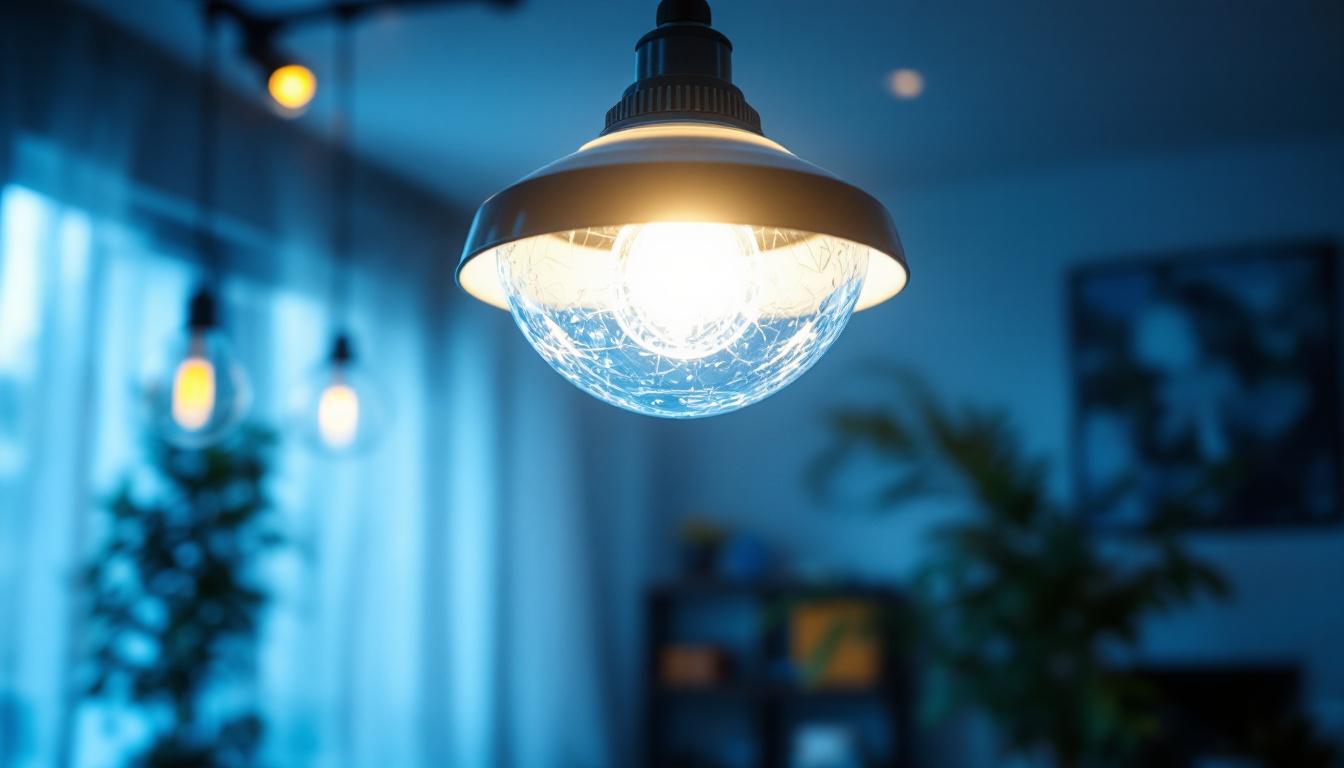
Fluorescent tubes have long been a staple in commercial and industrial lighting, offering a balance of efficiency and brightness. However, as technology advances and energy costs rise, optimizing these lighting solutions for maximum efficiency has become essential. This article explores various strategies and best practices to enhance the performance of fluorescent tubes, ensuring they deliver the best results for lighting contractors and their clients.
Before delving into optimization techniques, it is crucial to understand how fluorescent tubes function. These tubes operate by passing an electric current through a gas, which produces ultraviolet light. This light then excites a phosphor coating inside the tube, resulting in visible illumination. The design and components of fluorescent tubes play a significant role in their efficiency and effectiveness. The technology behind fluorescent lighting has evolved significantly since its inception, with advancements leading to improved energy savings and reduced environmental impact.
Fluorescent tubes come in various shapes and sizes, each suited for different applications. Common types include T12, T8, and T5 tubes, with T8 and T5 being more energy-efficient options. Understanding the differences between these types can help contractors choose the right tube for specific lighting needs. The T12 tubes, while still in use, are less efficient and have a larger diameter, making them less favorable in modern applications.
T8 tubes, with a smaller diameter and improved phosphor technology, offer better energy efficiency and longer lifespans. T5 tubes take this a step further, providing even greater efficiency and compactness, making them ideal for applications where space is a concern. Moreover, T5 tubes are often preferred in commercial settings due to their ability to deliver high lumen output while consuming less power, thus reducing overall operational costs. Additionally, the color temperature of these tubes can vary, allowing users to select the perfect ambiance for different environments, from warm white for cozy settings to cool white for more clinical or office spaces.
The efficiency of fluorescent tubes is influenced by several components, including the ballast, starter, and the tube itself. The ballast regulates the current flowing through the tube, and older magnetic ballasts can significantly reduce efficiency compared to modern electronic ballasts. Upgrading to electronic ballasts can enhance performance and reduce energy consumption, often resulting in a noticeable decrease in electricity bills over time. Furthermore, electronic ballasts can provide flicker-free operation, which is beneficial for environments where visual comfort is paramount.
Additionally, the quality of the starter can impact the lifespan and efficiency of the tube. A reliable starter ensures that the tube ignites properly and operates at optimal efficiency. Choosing high-quality components is essential for maximizing the performance of fluorescent lighting systems. Beyond the starter, the phosphor coating itself plays a critical role in determining the color rendering index (CRI) of the light emitted, which affects how colors appear under the illumination. Higher CRI values indicate more accurate color representation, making it particularly important in settings like art galleries or retail spaces where product appearance is crucial. The interplay of these components not only affects the immediate performance of fluorescent tubes but also contributes to their long-term sustainability and environmental footprint.
Proper installation is critical for achieving maximum efficiency from fluorescent tubes. Contractors should adhere to best practices that ensure optimal performance and longevity of the lighting system.
The placement and spacing of fluorescent tubes can significantly affect the quality of light produced. Tubes should be installed at appropriate intervals to prevent dark spots and ensure uniform illumination. In large spaces, using a grid layout can help distribute light evenly and enhance overall efficiency.
Additionally, considering the height of installation is essential. Mounting tubes too high can lead to insufficient light levels, while positioning them too low may cause glare. Finding the right balance is key to maximizing the effectiveness of fluorescent lighting.
Reflectors can enhance the efficiency of fluorescent tubes by directing more light toward the desired area. Installing reflectors above the tubes helps to maximize the output of light, reducing the need for additional fixtures. This not only saves energy but also improves the overall lighting quality in the space.
When selecting reflectors, it is essential to choose materials that have high reflectivity, such as aluminum or specialized reflective coatings. Properly designed reflectors can significantly boost the efficiency of fluorescent lighting systems.
Regular maintenance is vital to ensure that fluorescent tubes continue to operate at peak efficiency. Neglecting maintenance can lead to reduced light output and increased energy consumption.
Dust and grime can accumulate on fluorescent tubes and fixtures, diminishing light output. Regular cleaning of tubes and fixtures helps maintain brightness and efficiency. Using a soft cloth and mild cleaning solution can effectively remove buildup without damaging the tubes.
Contractors should also encourage clients to establish a cleaning schedule to ensure that lighting systems remain effective over time. This proactive approach can prevent the need for premature replacements and reduce overall maintenance costs.
Over time, components such as ballasts and starters may wear out, affecting the performance of fluorescent tubes. Regularly inspecting these components and replacing them as needed is crucial for maintaining efficiency. Contractors should educate clients about the signs of failing components, such as flickering lights or difficulty in starting, to ensure timely replacements.
Implementing a preventive maintenance program can help identify issues before they lead to significant problems, ensuring that the lighting system operates efficiently for years to come.
In an era where energy efficiency is paramount, implementing energy-saving strategies for fluorescent lighting is essential. These strategies not only reduce costs but also contribute to sustainability efforts.
Integrating occupancy sensors into fluorescent lighting systems can significantly reduce energy consumption. These sensors detect the presence of individuals in a space and automatically turn lights on or off accordingly. By ensuring that lights are only active when needed, contractors can help clients save on energy costs.
Occupancy sensors are particularly beneficial in areas with variable occupancy, such as conference rooms or restrooms. This technology not only enhances efficiency but also extends the lifespan of fluorescent tubes by reducing the number of hours they are in use.
Dimming systems allow for greater control over lighting levels, enabling users to adjust brightness based on specific needs. By incorporating dimming capabilities into fluorescent lighting, contractors can help clients optimize energy usage and create a more comfortable environment.
When implementing dimming systems, it is essential to ensure compatibility with the fluorescent tubes and ballasts being used. Properly configured dimming systems can lead to significant energy savings while maintaining the desired lighting quality.
Selecting the appropriate fluorescent tube for a specific application is crucial for achieving maximum efficiency. Factors such as color temperature, lumen output, and energy consumption should be carefully considered.
Color temperature influences the ambiance of a space and can affect productivity and mood. Fluorescent tubes are available in various color temperatures, ranging from warm white to cool daylight. Choosing the right color temperature for the intended application can enhance the overall effectiveness of the lighting system.
Lumen output, which measures the amount of visible light emitted, is another critical factor. Higher lumen output may be necessary for areas requiring bright illumination, such as warehouses or manufacturing facilities. However, balancing lumen output with energy consumption is essential to ensure that the lighting system remains efficient.
When selecting fluorescent tubes, it is advisable to consider energy-efficient options that comply with current energy standards. These tubes are designed to provide the same level of illumination while consuming less energy, resulting in lower utility bills and a reduced environmental impact.
Contractors should stay informed about the latest advancements in fluorescent tube technology, as new products are continually being developed to enhance efficiency and performance. By offering clients the most up-to-date options, contractors can help them achieve their lighting goals while maximizing energy savings.
While fluorescent tubes have been a reliable lighting solution for many years, the lighting industry is evolving rapidly. Emerging technologies, such as LED lighting, are gaining popularity due to their superior efficiency and longevity. However, fluorescent tubes still hold a valuable place in many applications.
For contractors considering a transition to LED lighting, it is essential to evaluate the specific needs of each project. LED technology offers numerous advantages, including lower energy consumption, longer lifespans, and reduced maintenance requirements. However, the initial investment may be higher than that of fluorescent tubes.
Contractors should conduct a thorough cost-benefit analysis to determine whether a transition to LED is appropriate for their clients. In some cases, retrofitting existing fluorescent fixtures with LED-compatible components may provide a more economical solution while still enhancing efficiency.
As the industry shifts toward newer technologies, maintaining existing fluorescent systems remains crucial. Contractors should continue to support clients with their fluorescent lighting needs, ensuring that these systems operate efficiently and effectively.
By staying informed about advancements in fluorescent technology and best practices, contractors can provide valuable insights and support to clients, helping them navigate the evolving lighting landscape.
Optimizing fluorescent tubes for maximum efficiency is a multifaceted endeavor that requires a comprehensive understanding of the technology, installation practices, maintenance, and energy-saving strategies. By implementing the best practices outlined in this article, lighting contractors can enhance the performance of fluorescent lighting systems, ensuring that clients receive the best possible results.
As the lighting industry continues to evolve, staying informed about advancements and emerging technologies will be essential. By balancing the use of fluorescent tubes with newer options like LED lighting, contractors can provide clients with efficient, effective, and sustainable lighting solutions that meet their needs today and in the future.
Ready to elevate your lighting game? At LumenWholesale, we provide lighting contractors with the highest quality, spec-grade fluorescent tubes and cutting-edge lighting solutions at unbeatable wholesale prices. Say goodbye to local distributor markups and hello to our premium selection that meets rigorous industry standards. With free shipping on bulk orders, you can stock up on efficient, reliable lighting without any hidden fees. Don’t compromise on quality or value—choose LumenWholesale for your next project and experience the ultimate in convenience and affordability. Wholesale Lighting at the Best Value is just a click away!

Discover essential tips for selecting the perfect exit sign combo to enhance safety and efficiency in your lighting projects.

Discover the must-have tools every lighting contractor needs with Shoplight.

Discover the essential insights into ceiling hanging lights with answers to lighting contractors’ most common questions.

Discover essential strategies and innovative techniques in “Monument Of Light: Crucial Insights for Lighting Contractors.” This article offers expert guidance on enhancing design, efficiency, and sustainability in lighting projects, empowering contractors to illuminate spaces with creativity and precision..